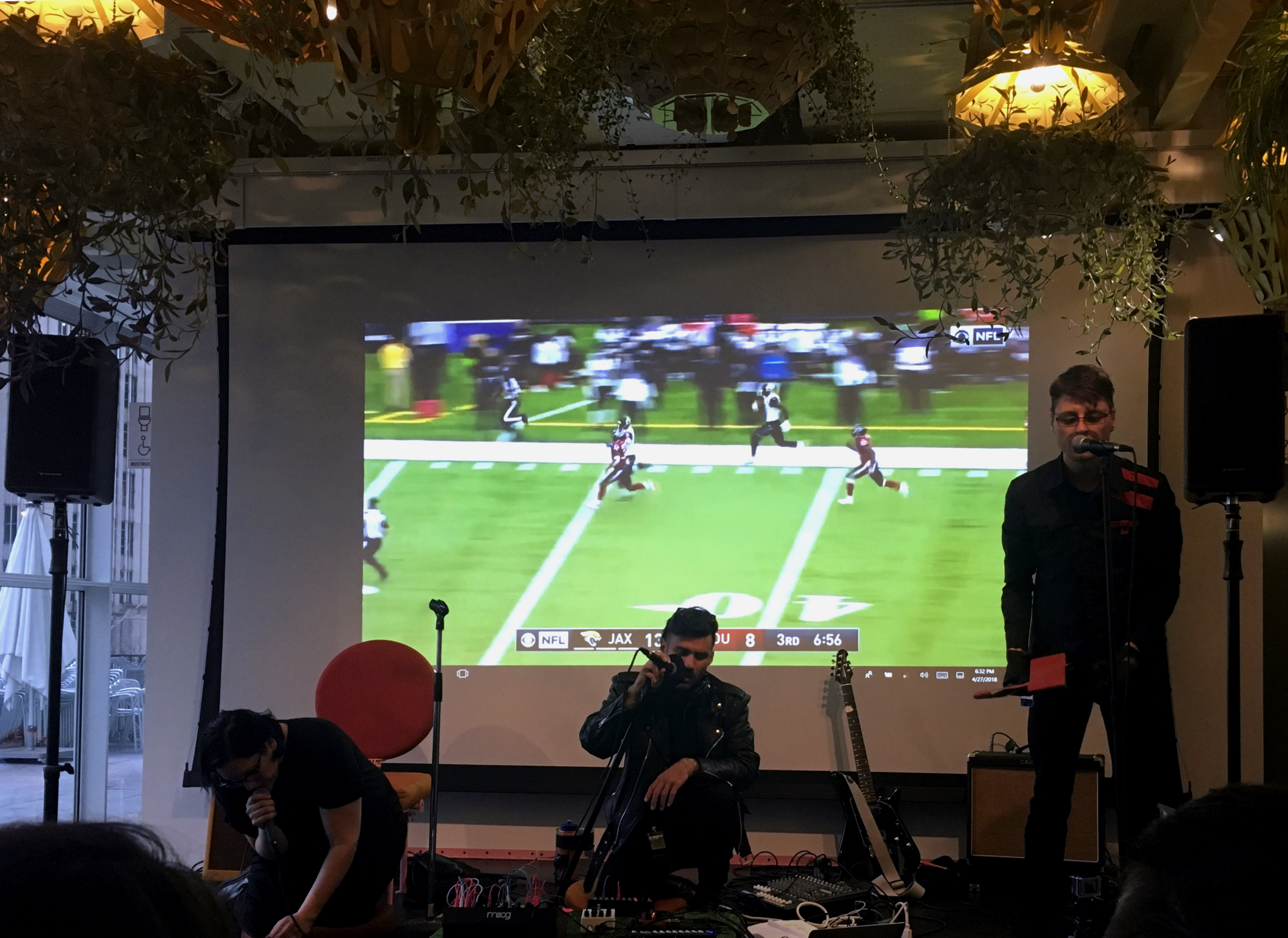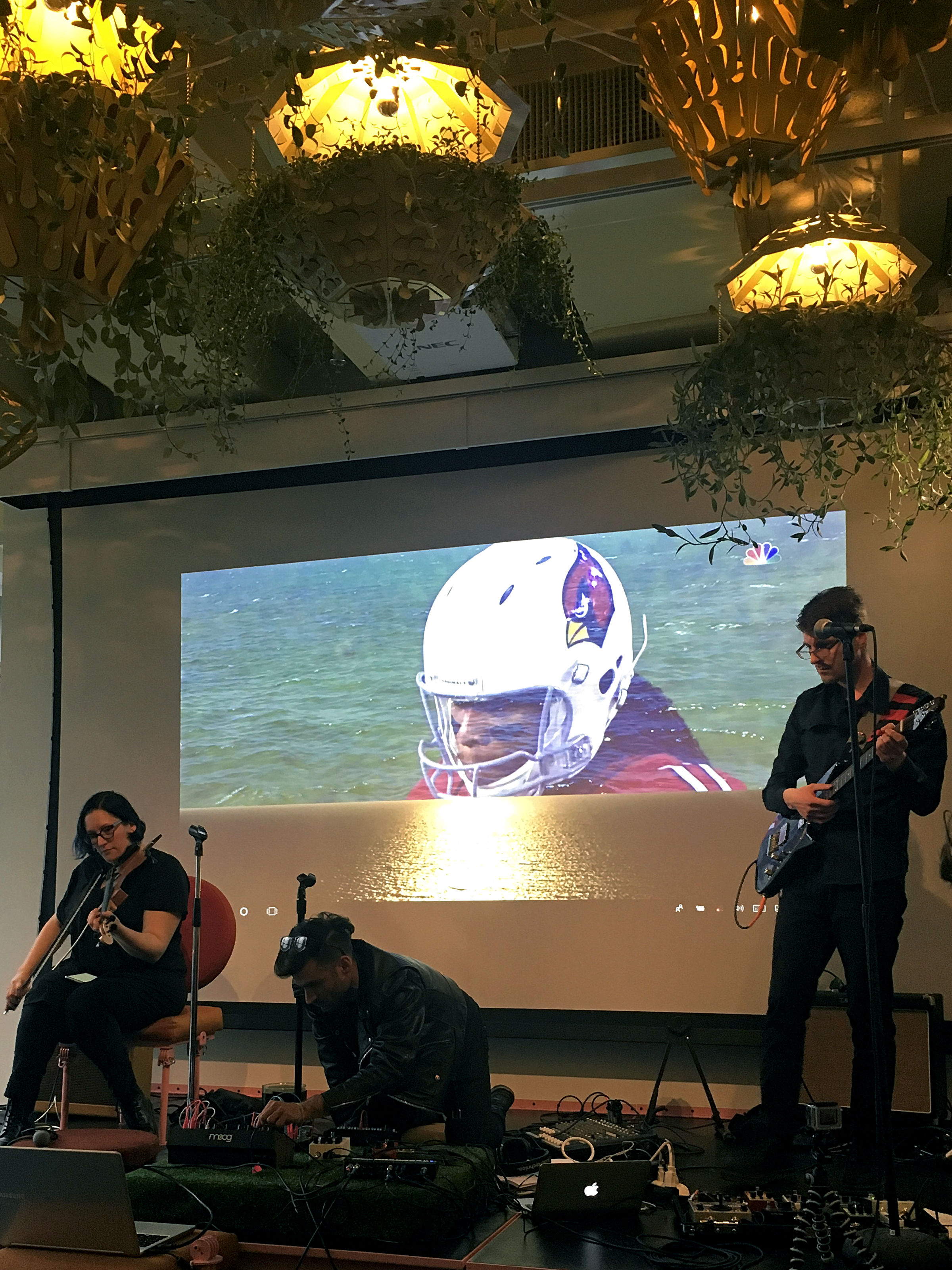2025
Plastic grocery bags, polyester ripstop fabric, Tyvek, 1mm reflective paracord, aluminum rope tensioners, T-pins
8’ x 6’, Dimensions variable
Tent Research Group: Future Architecture

2025
Plastic grocery bags, polyester ripstop fabric, Tyvek, 1mm reflective paracord, aluminum rope tensioners, T-pins
8’ x 6’, Dimensions variable
2024
Hand mixed concrete and steel poles.
Series of seven.
~3’ x 3’ x 8’
2024
Two-channel looped video, color. Stereo sound with original field recordings and synthesizer composition.
16 min 24 sec
2023
Single-channel looped video, color. Stereo sound with original field recordings and synth compositions, and fragments from vintage car commercials. 12 min., 07 sec.
Perforated steel sign pole, hand-cast concrete cylinders, chain, plywood, 2x4s, speakers, monitor, and other AV equipment.
4’ x 4’ x 8’
2022
Single channel color video installation with stereo sound
10 min 11 sec
2022
Sound Devices MixPre-3, LOM Uši Pro microphones
47 10-minute, 32-bit stereo .WAV files
2021
4-week field recording workshop at SCI-Arc in Los Angeles
2020
Curatorial project and performance exploring intersections between sound and architecture.
Experimental Sound Studio, The Quarantine Concerts
2020
Sound Devices MixPre-3, LOM Uši Pro microphones
11 stereo .WAV files, length variable
2020
Spoken work and sound performance.
Collaboration with Jennifer Swann
~29 min.
2019
Charcoal on paper
9 in x 12 in, series of three
2019
Zoom H5 recorder.
One 4 min. .WAV file
Museum of Contemporary Art, Chicago
April 27, 2018
Taking inspiration from Foley artists, Man in Motion is a non-musical sound-track set to video clips of NFL football. By controlling the audience's auditory access to the video, Man in Motion illuminates both the violent and tender interactions that occur between the athletes on the field.
The sound performance to Man in Motion was presented at the MCA in collaboration with Billie Howard and Fyodor Sakhnovski, aka Amusia Collective.
Video, synthesizer, voice, field recordings, graphic design: Daniel Tovar
Violin, field recordings, voice: Billie Howard
Guitar, metals, voice: Fyodor Sakhnovski








Inferno Re:sound Workshop, Horner Park, Chicago, IL, December 4, 2016
Inferno Re:sound Workshop, Douglas Park, Chicago, IL, December 7, 2016
Sound and Embodiment, School of the Art Institute of Chicago, December 18, 2017
A workshop exploring hearing and its connection with vision using field recordings and simple line drawings, encouraging participants to engage with art and their environments in new ways.


Graphic Score A

Graphic Score B



Chicago Reader, “Ear Wolf”


Apophania is the tendency to perceive connections between seemingly unrelated things. The visual and the aural are separate modes of perception: we typically cannot see sounds or hear colors. Yet, we tend to correlate certain aural qualities with seemingly unrelated visual qualities. A synth wash can seem to pair with a billowing sheer curtain; quick stuttering changes in volume can seem to correspond to ripples in the water. Apophanies is an ongoing series of videos exploring the perceived connections (and disconnections) that we tend to make between the aural and the visual.

This EP is the result of some ideas about sculpture and art criticism that I became interested in while in coursework as a Ph.D. student. The EP takes its title from a book by Johann Gottfried von Herder called Critical Forests. One of Herder's central claims in this book is that the different arts can be distinguished according to the different sense organs and a particular work of art can be judged as good or bad to the extent that it is able to engage and excite its proper organ.
Thus, a painting is good or bad to the extent that it engages and excites the eyes; music is good or bad to the extent that it engages the ears; and sculpture is good or bad to the extent that it engages our sense of touch.
Of course, Herder was well aware that the way we *actually* appreciate art raised problems for his account, especially in the case of sculpture. While we do look at paintings and listen to music, we do not actually touch sculpture. We look at it. Must we conclude, then, that sculpture can never be properly judged without repealing or transgressing the museum rules?
Herder thought not. This is because, he argued, we can visually appreciate tactile qualities. Over our years of living, we have learned to associate the way things feel with the way they look. We learn that when something feels smooth, it reflects light in a certain smooth way; when something is rough, it reflects light in a kind of jagged way; etc.
The consequence of this is that we can appreciate the way something *feels* simply by looking at it. We do not need to touch the brick to know it is rough, we can *see* its roughness. For Herder this was good news as it allowed him to happily maintain his division of the arts according to the senses without inviting the ire of museum guards everywhere.
So much for Herder.
My primary interest in Herder's theory is its suggestion that, in general, a sense organ can (in a way) sense properties that are properly perceived by another sense.
On the basis of this, I wondered whether it would be possible to make a piece of sound that functioned more like a piece of sculpture than a piece of music. Rather than making sounds that evoked properties typically associated with music such as melody, rhythm, harmony, I aimed at makings sounds that evoked more tactile sensations.
In this regard, what I have produced certainly fails. It goes some way to provoking a tactile experience but it is far too musical. There is melody and even rhythm. To some extent, I have tried to use this to my advantage. When melody popped up, I tried to cut it short, replacing it with grating sounds more tactile than musical. But I was only able to take this so far. This is therefore failed experimental music.
released April 10, 2014